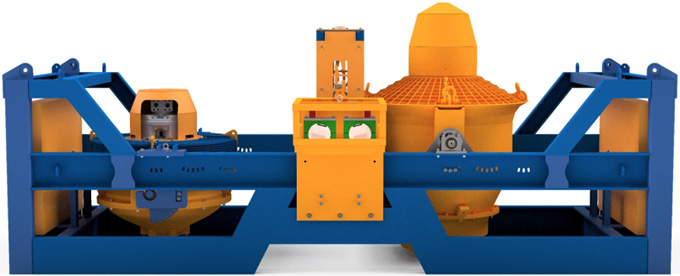
Subsea trenching and excavation innovator, Rotech Subsea, has completed key IRM operations at a major Dutch offshore wind farm in the North Sea. The leading provider of Controlled Flow Excavation and specialist IRM tools delivered the cable de-burial, grab, cut, recovery and post-lay trenching for a Netherlands-headquartered global subsea solutions provider.
Deploying its TRS2 CFE / RS2-3 hybrid Jet Trenching tool and RSG-C Integrated grab, cut and recovery tool, Aberdeen-based Rotech Subsea completed the de-burial of the 0.4km of 118mm cable in two passes at water depths of between 35-40m. Operating at just 45-60% power - and progressing at 3m/min - the TRS2 easily excavated down to the top of cable on the first pass with good visibility most of the way. A second pass was made to ensure good cable recovery. The cable was successfully de-buried from 1.3-1.8m below the seabed which consisted of very soft to firm clay. Currents were 2 knts maximum and sea state reported at 0.5-3m Hs.
To recover the faulty cable Rotech’s RSG-C was deployed using the ship’s crane. Good visibility was observed on the tool-mounted RSG-C camera and the de-burial trench stayed open and clear for the grab and cut operations. Cutting operations took 10-15 minutes with the good end of the umbilical recovered to deck, sealed then laid back down on the seabed.
When grabbing the faulty end, it was discovered that the original damage to the umbilical severed it so there was a section between that, and the first cut point, that was subsequently grabbed and recovered to deck. With the umbilical connected through a cable tensioner and carousel, 125m of cable was pulled in until the 2nd fault location was found. The Cable jointing crew completed the final cut on deck then completed the jointing operations.
For burial operations, Rotech’s customisable TRS2 CFE tool was reconfigured, on deck, to the RS2-3 Jet Trencher setup for maximum cutting ability. Two passes were conducted over the new
cable route and 2nd joint at 75 -95% power at approx. 5m/min as instructed by the client with the requested higher speed in hard seabed conditions mitigated by later rock dumping along the route.
Speaking about the IRM works, Rotech Subsea Director of Subsea, Stephen Cochrane, commented: "This was another safe, efficient and successful mobilisation for Rotech Subsea with the client extremely satisfied with how our project team responded to the discovery of additional damage to the subsea cable. It’s another success for our suite of configurable CFE & hybrid jet trencher tools which were used here for both de-burial and to conduct post-lay trenching without the need for additional and costly spreads of equipment for each job.”
Rotech Subsea’s research, development and engineering team has created a suite of 18 sector-leading non-contact CFE, Suspended Jet Trenching tools in-house at its Aberdeen HQ. With enhanced capabilities, Rotech Subsea’s CFE suite of tools is firmly established as the method of choice for offshore wind farm cable trenching and excavation in Europe and beyond.
KeyFacts Energy Industry Directory: Rotech l KeyFacts Energy: Subsea news
 KEYFACT Energy
KEYFACT Energy